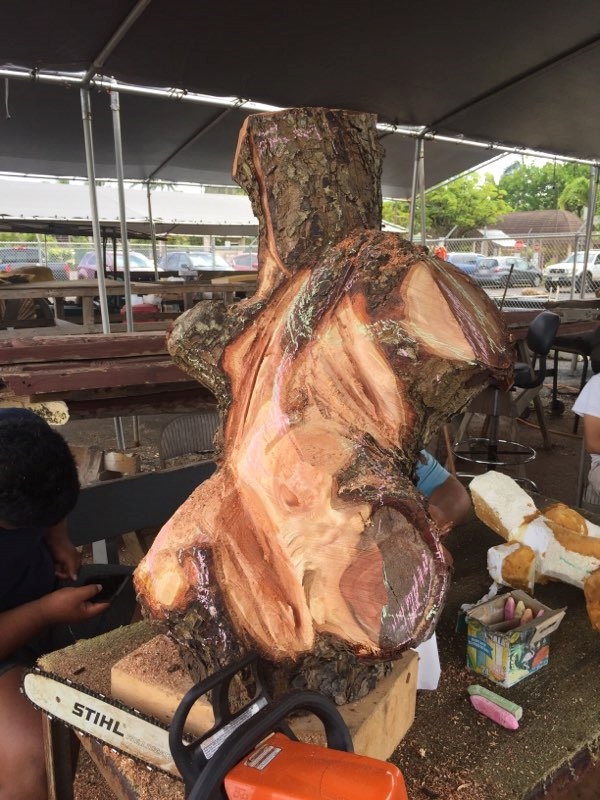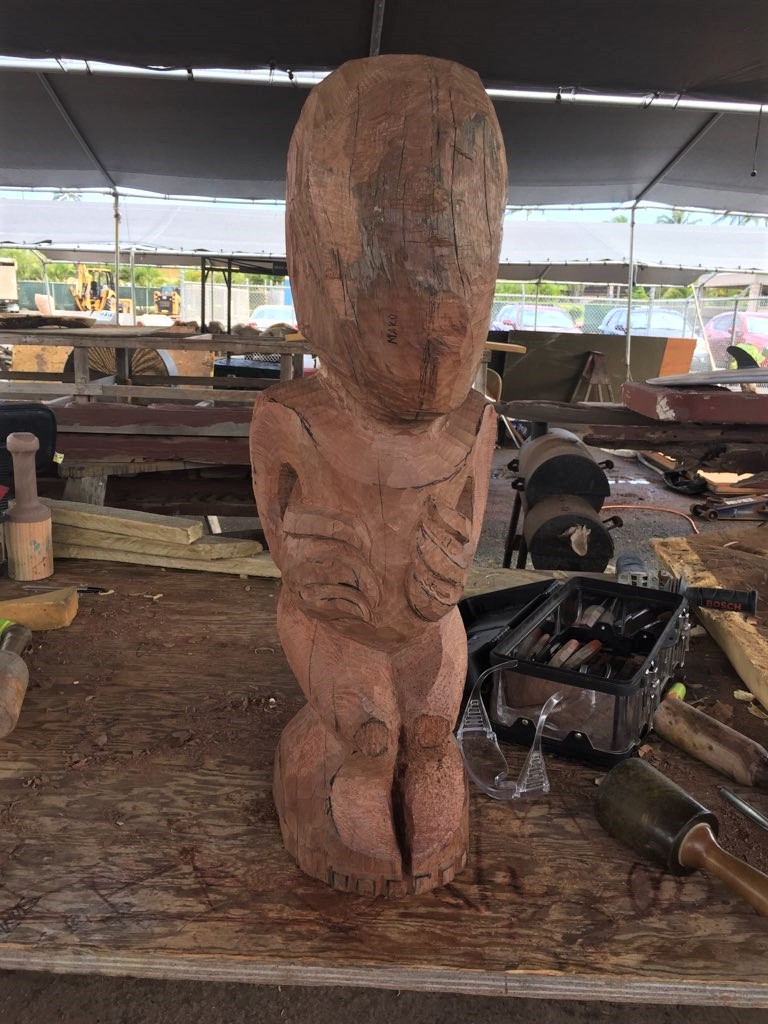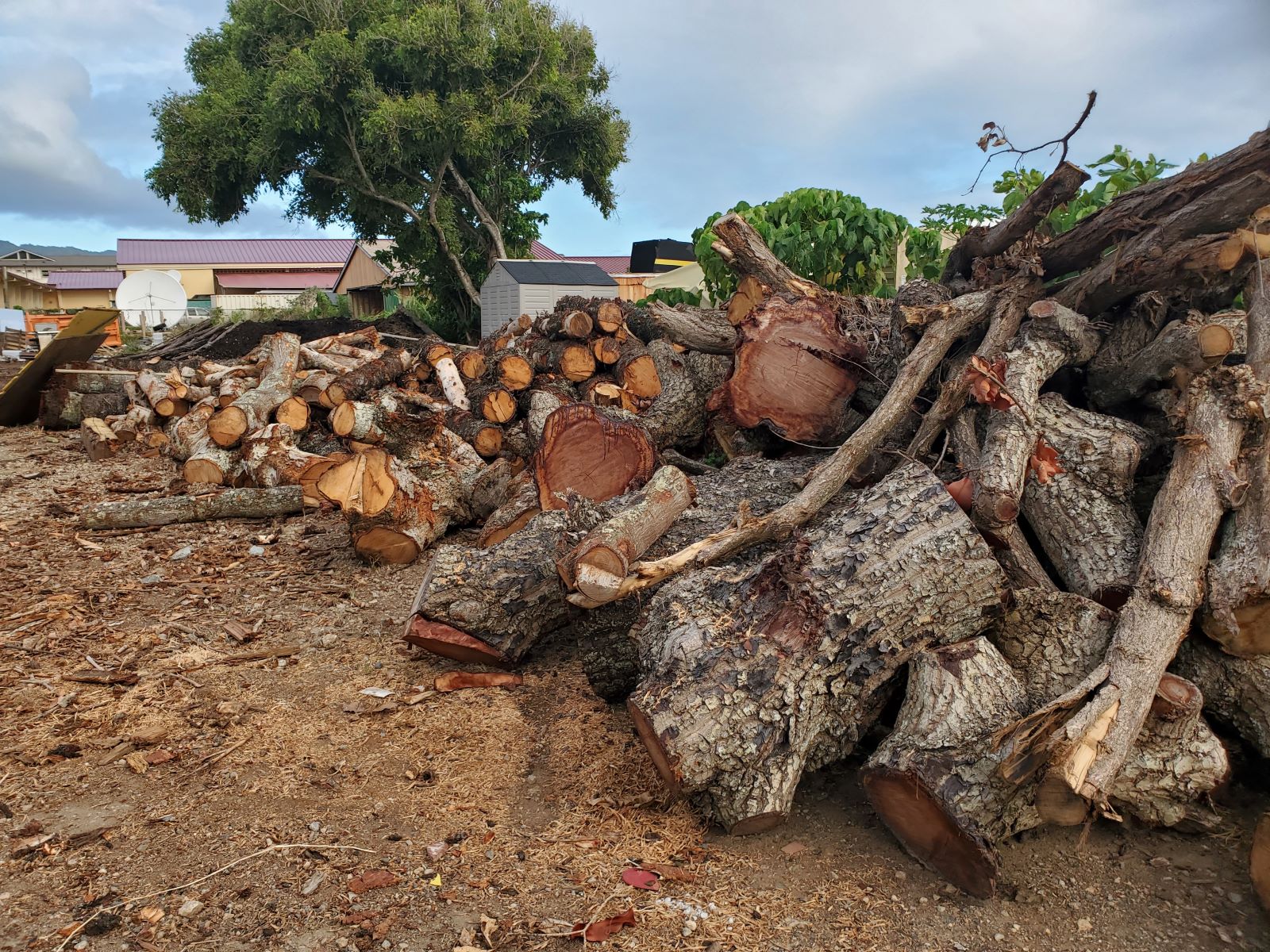Welcome to Carvers of Polynesia, a five-part series taken from detailed interviews with Raymond Mokiao, one of our experienced carvers. Raymond explains how intricate carvings and ornate artwork, reflecting the varied cultures of our Pacific Islands, brings life to the Polynesian Cultural Center.
It all starts with the wood
We begin in front of a tremendous pile of tree trunks and branches sorted by type and potential. Wood is the foundation of the carver’s life. You may walk past a rotting tree and think, “What an eyesore”. But the carver will stand quietly and imagine how each piece could be used to highlight a burl, a grain or a unique pattern of colors. The carver’s world is about hidden potential, and as we stood there looking at this massive pile of wood, I saw that potential laid out before us through Raymond’s eyes.

You can begin to see the form of the god Kane breaking forth from this beautiful section of Kamani wood.
Raymond began by explaining where this mass of promise came from. “We recently acquired at least 50 tons of wood – probably close to a $100,000 value. Much of it came from the trees removed from the parking lot in front our administration building in preparation for an extensive solar energy project.”
Much to be thankful for
“The Center has never had this much wood resource, so this is a really good harvest for us. We now have a variety of Kamani, Ohai (Monkey Pod), Norfolk Pine, and Coconut. Normally we get our wood from locals who will call and say “oh, we are trimming a tree”. We are grateful for the donations, but it’s expensive to go across the island to it. We also commonly receive donated wood from our community on a regular basis, much of which we use for the villages to burn.”

Teko Teko tiki, from the Maori culture of New Zealand, are ancestral figures which typically adorn the gables of their meetinghouses.
Look to the source
So, what will the carvers do with these gifts of abundance? A well-known Hawaiian proverb may provide the best answer. Nānā i ke kumu – look to the source. In this case – the source starts with the wood itself – patiently waiting to have a conversation with that special artist who is ready to listen.


Recent Comments